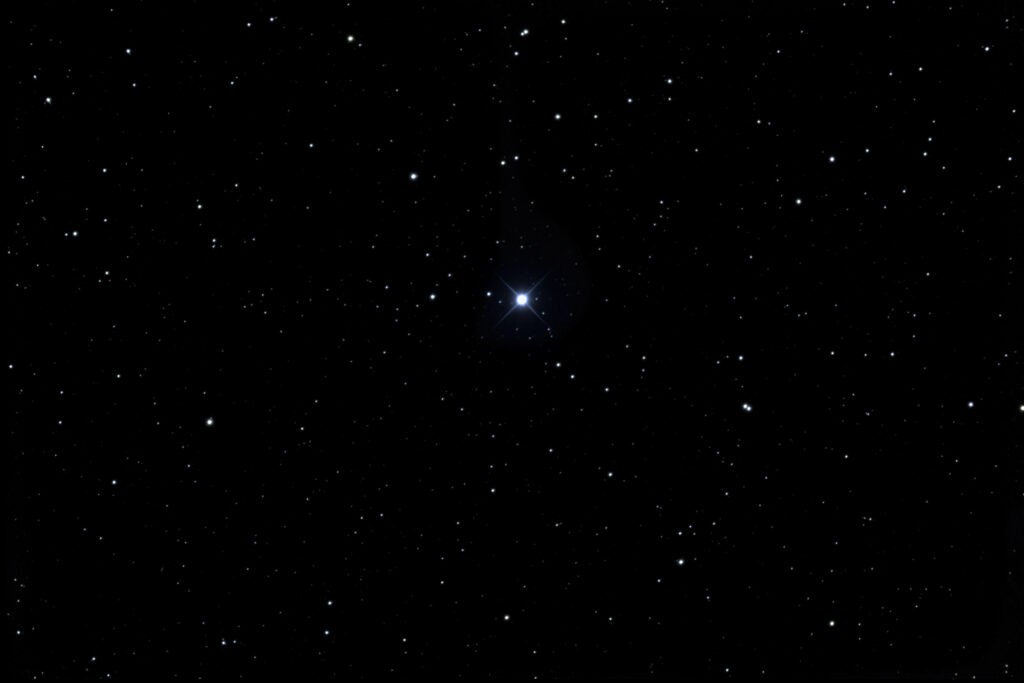Astronomers have devised a "spectral classification" system to categorize stars based on temperature. The letters O B A F G K M are used, with O stars being the hottest and M stars the coolest. Since temperature is generally a function of mass, O class stars tend to be giants. And, according to Planck's Law a body's temperature is correlated with wavelength and thereby color, meaning that the hottest stars (O class) tend to be bluish while the coolest stars (M class) tend to be red. There are very few O class blue giants, since they have a short burning cycle due to their enormous mass. in fact, no more than 1 in 800 stars in our galaxy are O class stars.
The bright blue star in the center of the above image is actually a "grazing" double star, meaning that it consists of two stars orbiting about a common center of gravity in such close proximity (less than 10 million miles) that their atmospheres are almost certainly in physical contact. What makes this "star" unique is that both stars are O class blue giants, one of the only known examples in our galaxy of a double star containing two O class stars. The two stars are too close to be seen as two separate stars, even in the largest Earth-based telescopes. The combined luminosity of these O class stars makes this system one of the brightest objects in our galaxy.
Pearce's Star
Date Taken:November 7, 2009
Location Taken: Conditions of Location:FWHM 2.3
Equipment Used:14.5" Ritchey-Chretien telescope, SBIG STL11000 CCD camera, Astrodon RGB filters, TCC, PIR, remote guide head used with Takahashi Sky90 for autoguiding, T-Point used for polar alignment (required for each imaging session due to my portable setup).
Processing Used:4 x 60 seconds luminance, 8 x 30 seconds RGB, guided, 1x1 binning, processed in Maxim DL and Photoshop (total exposure 16 minutes)
Distance from Location:5,600 light years
Constellation:Cassiopeia (mythological wife of King Cepheus)
Other Link:
